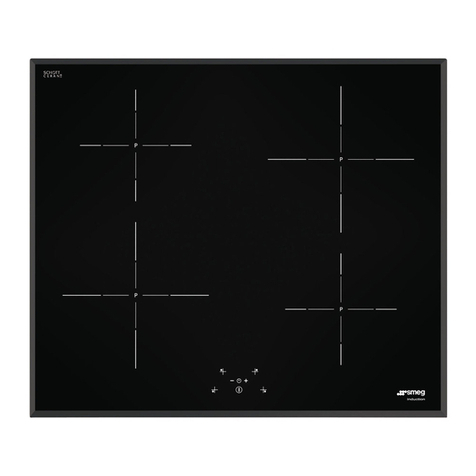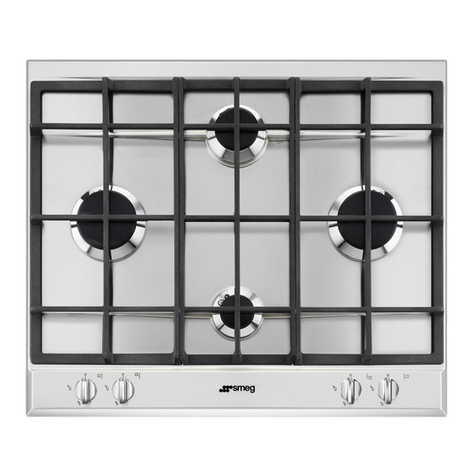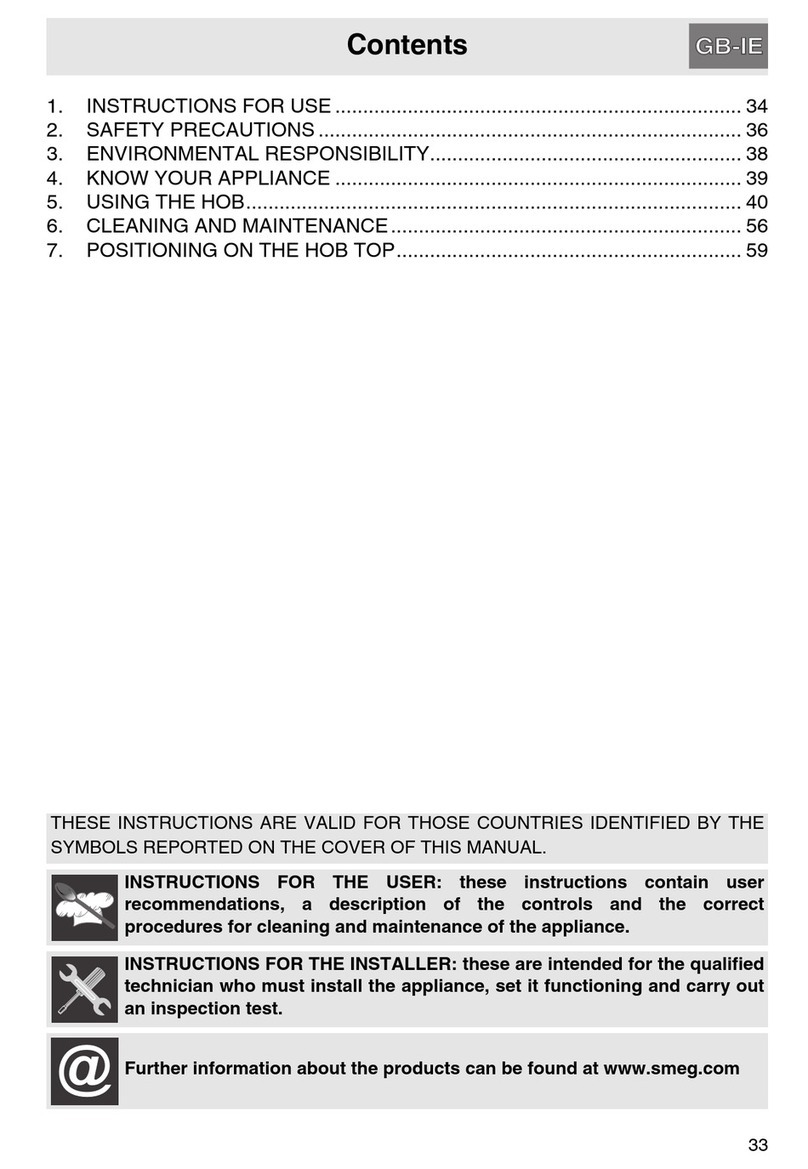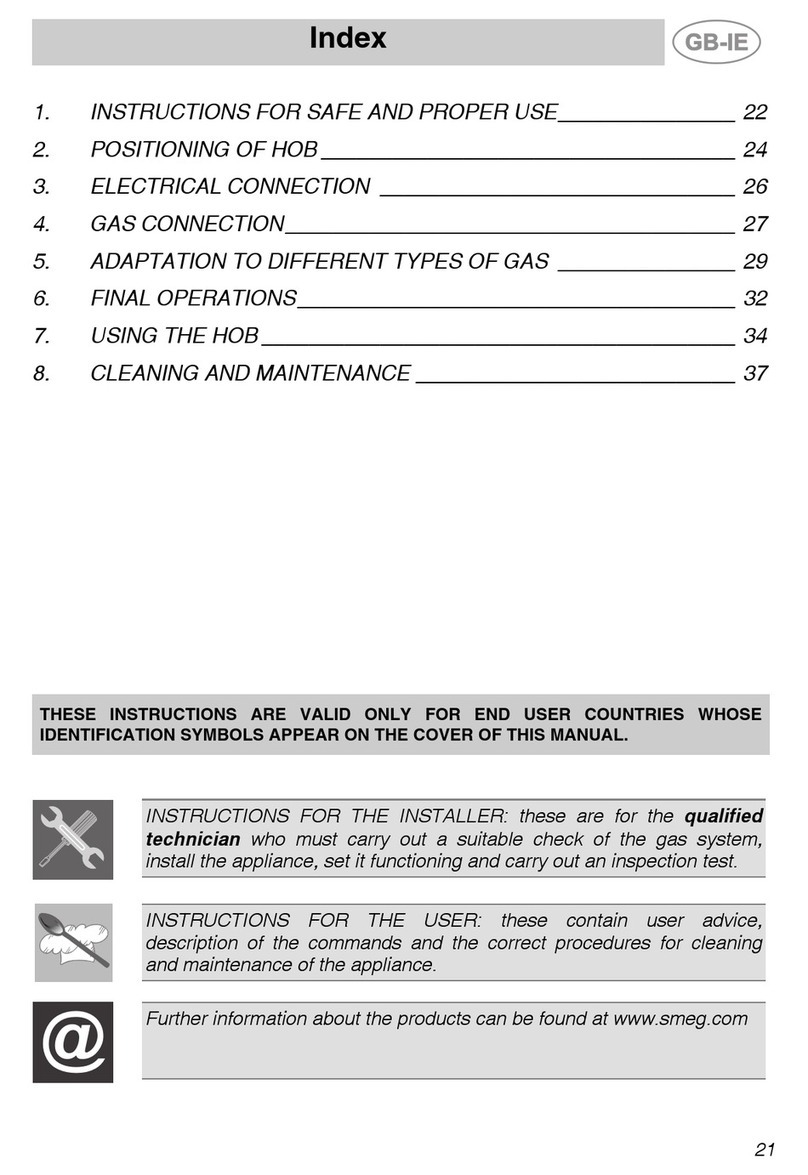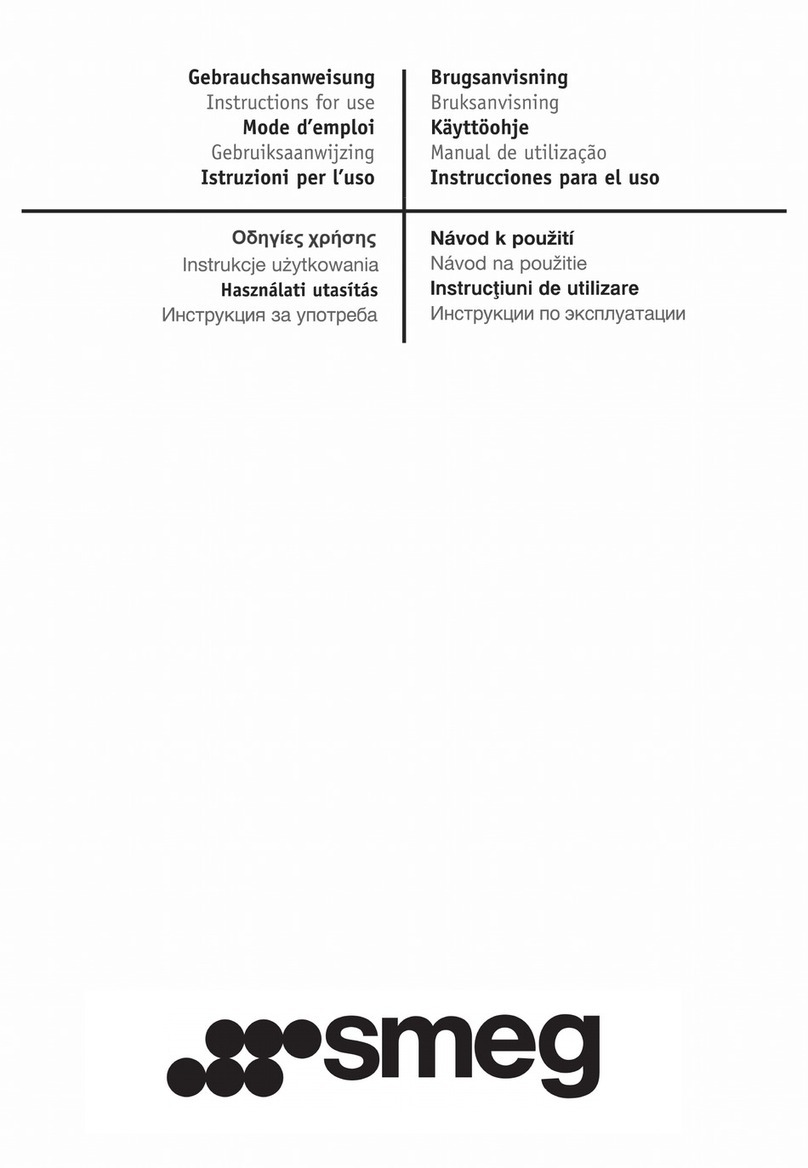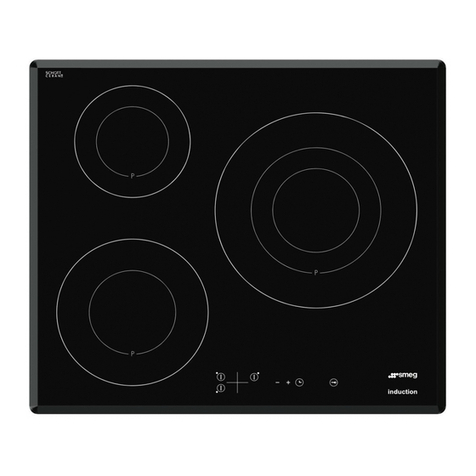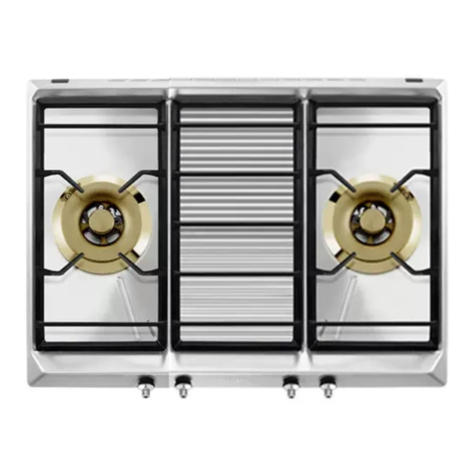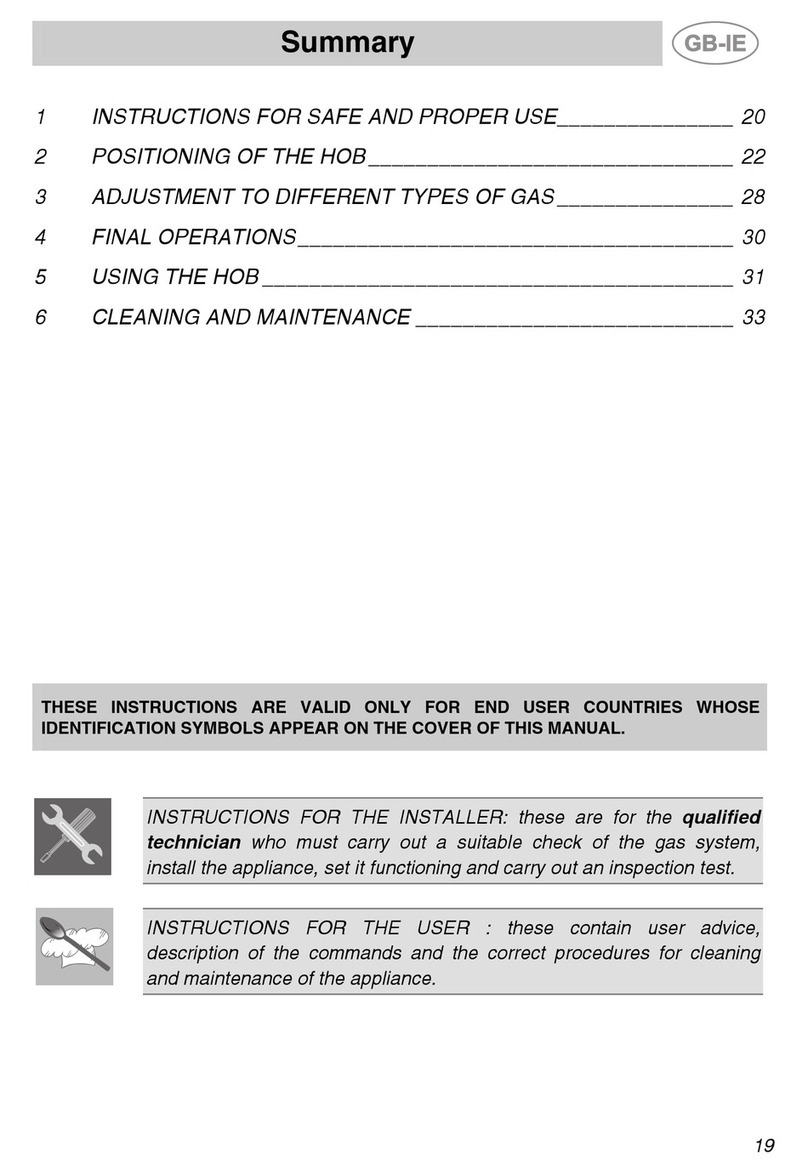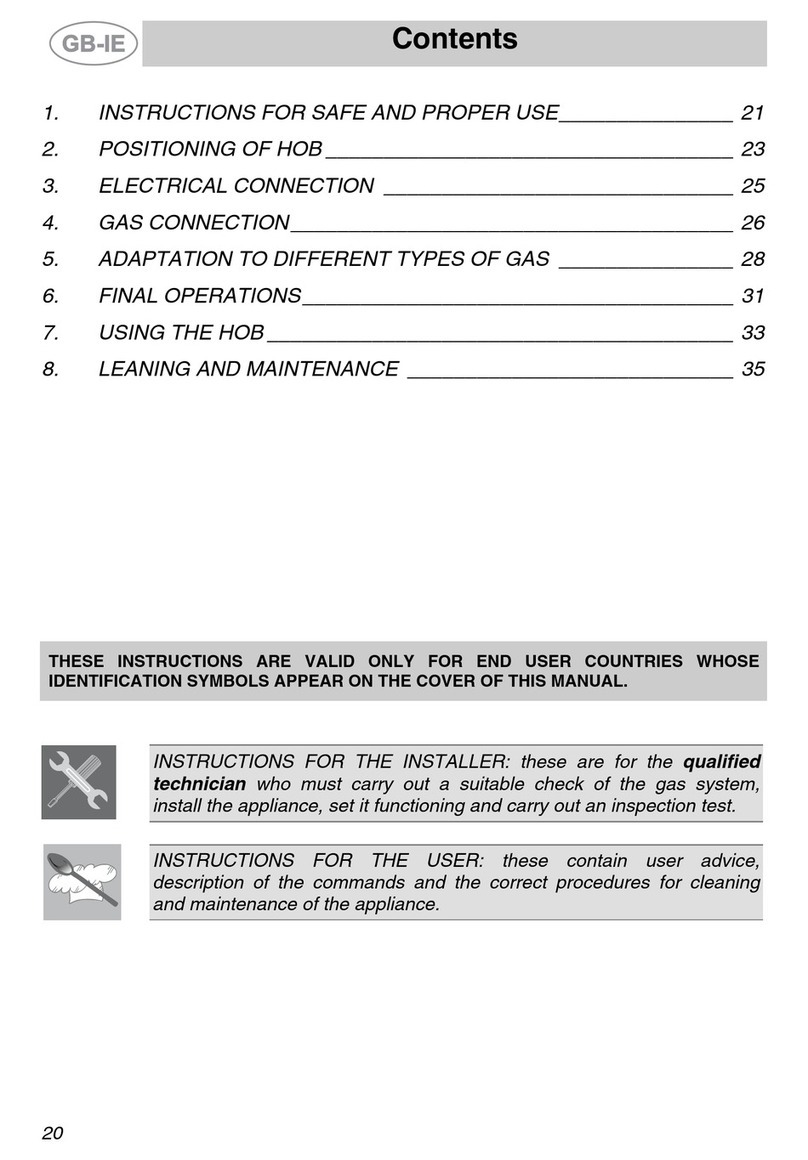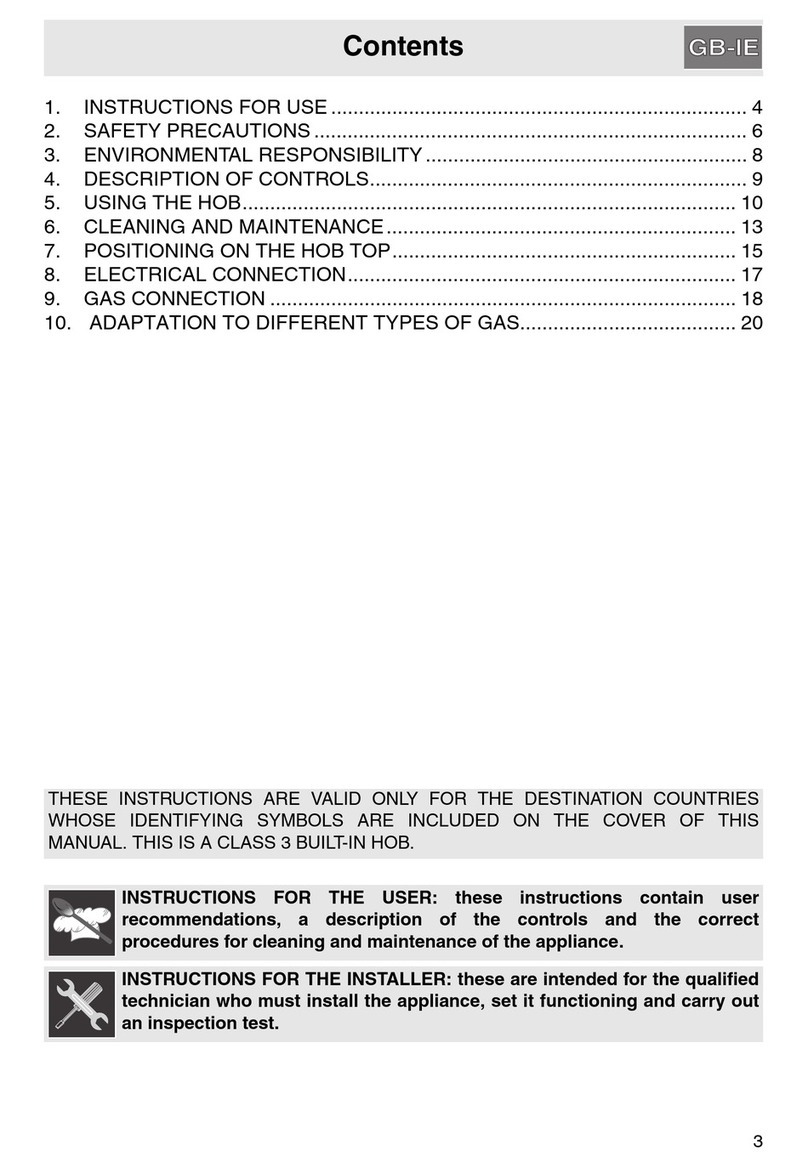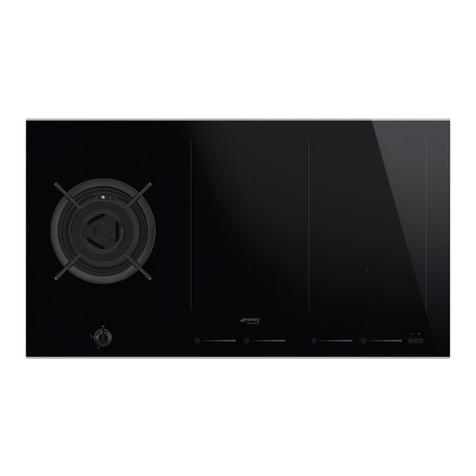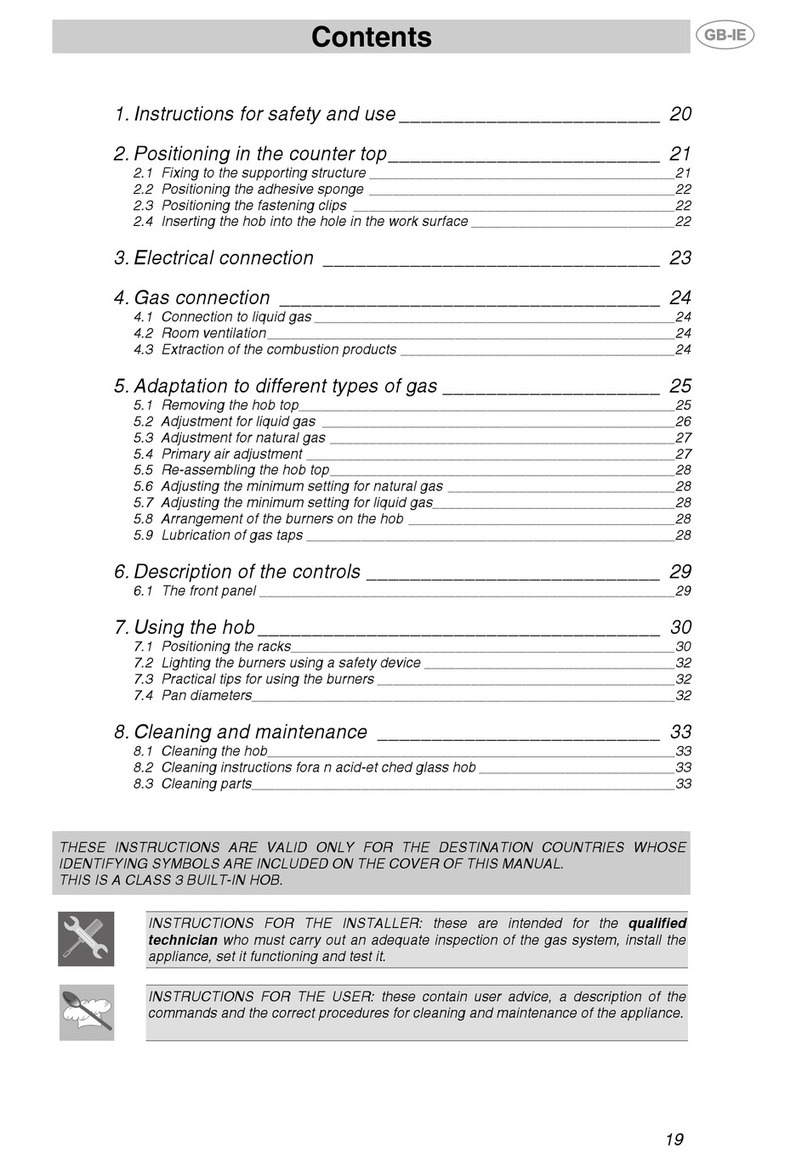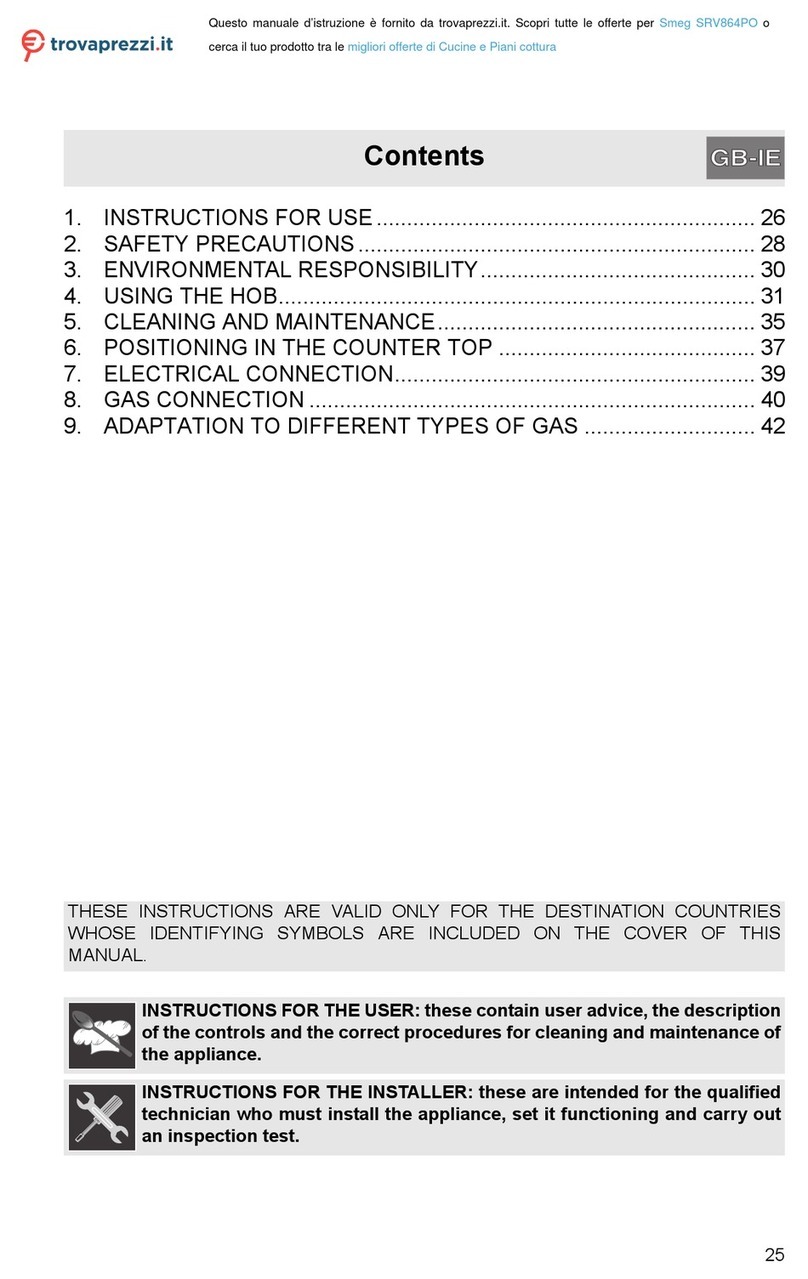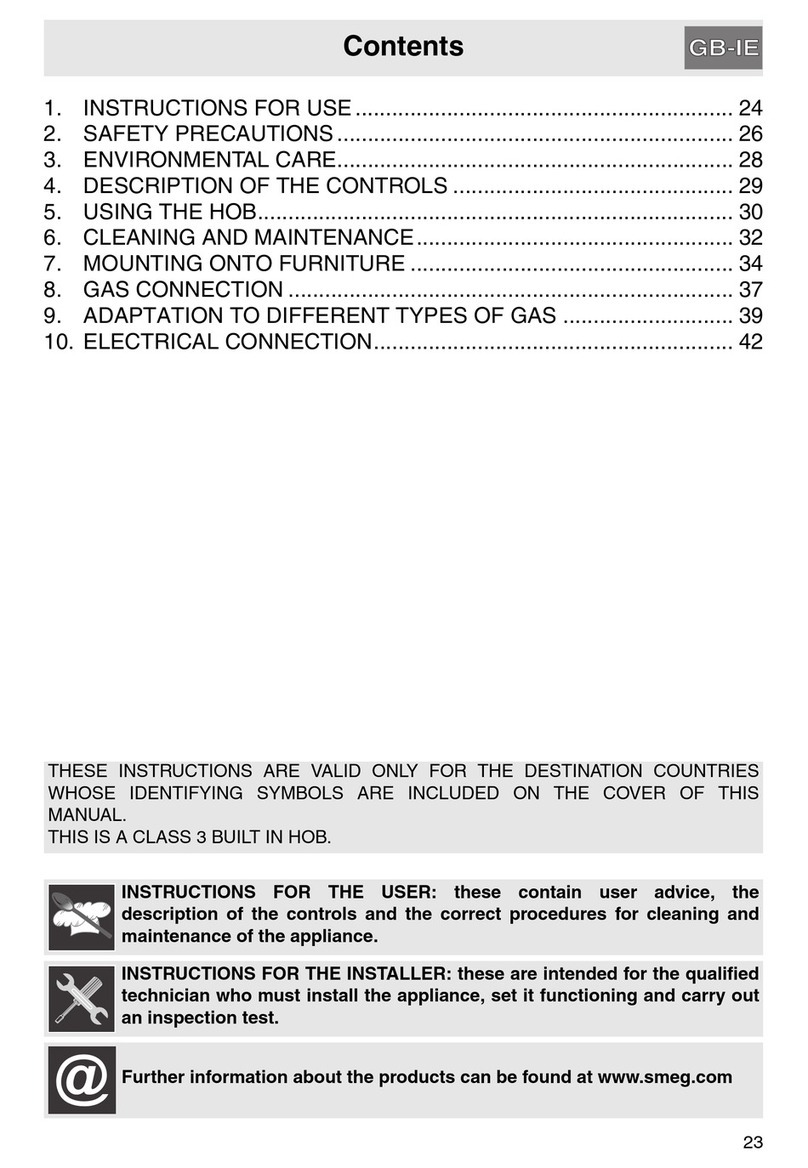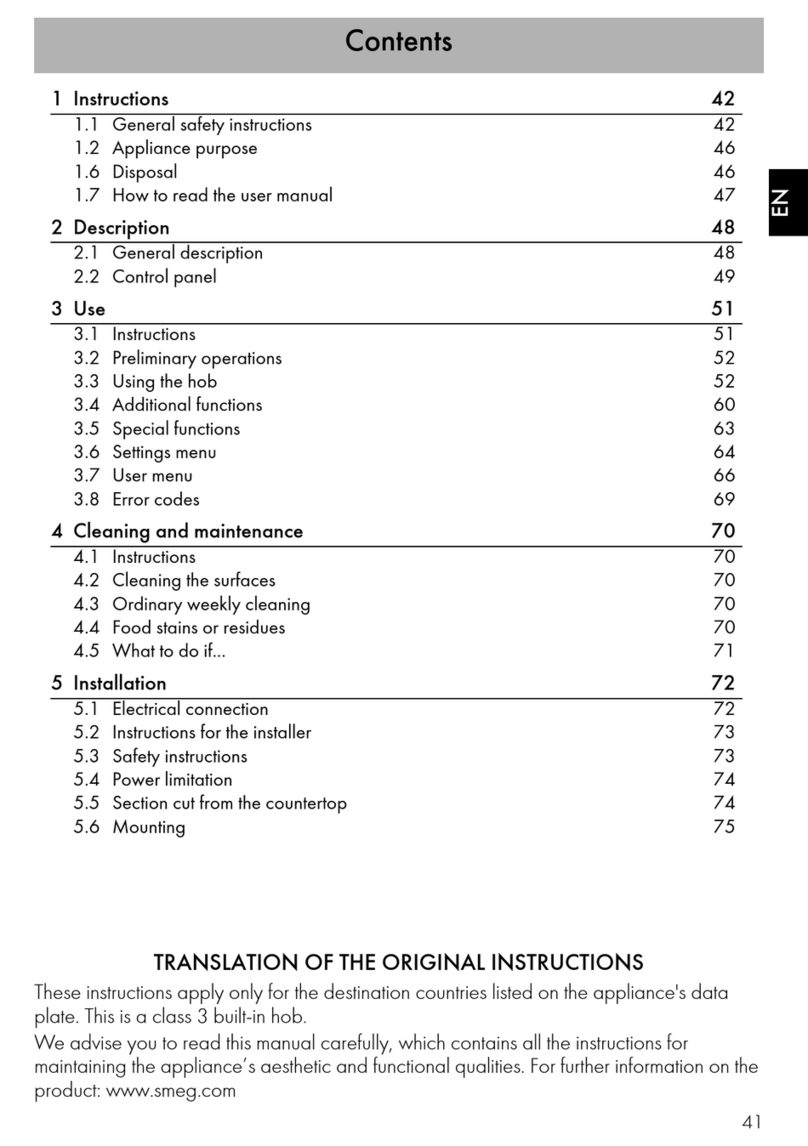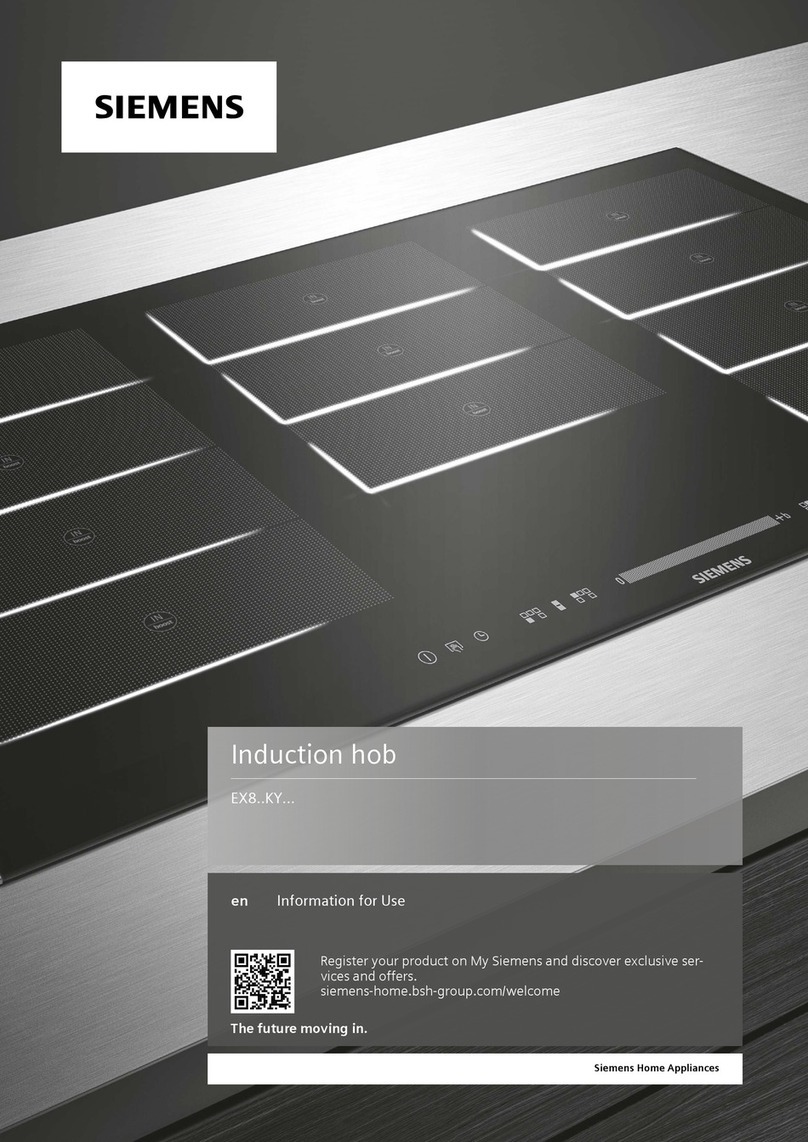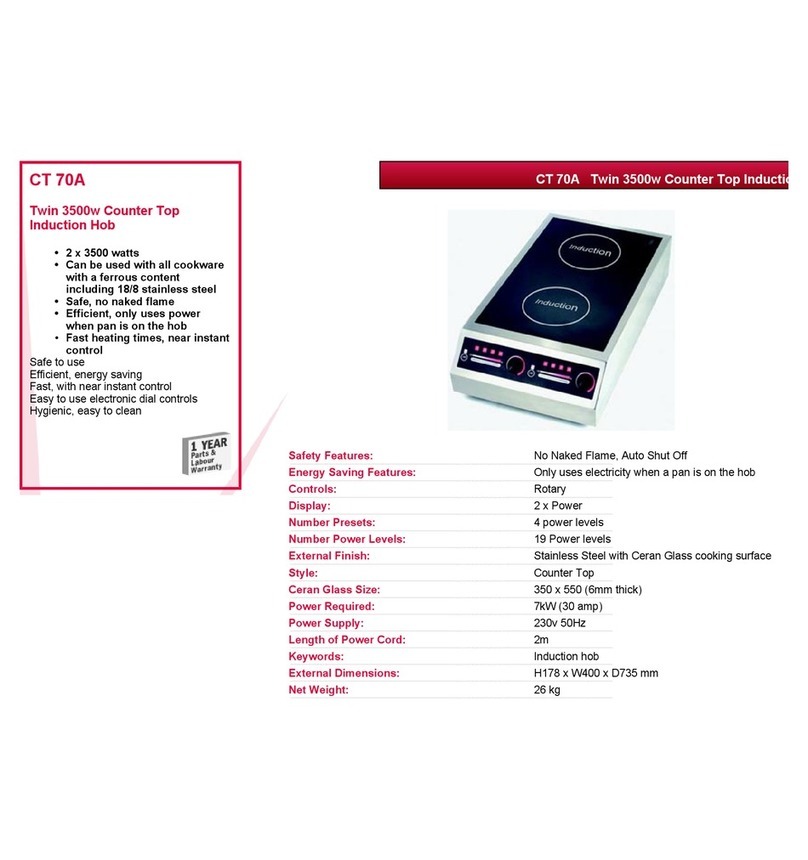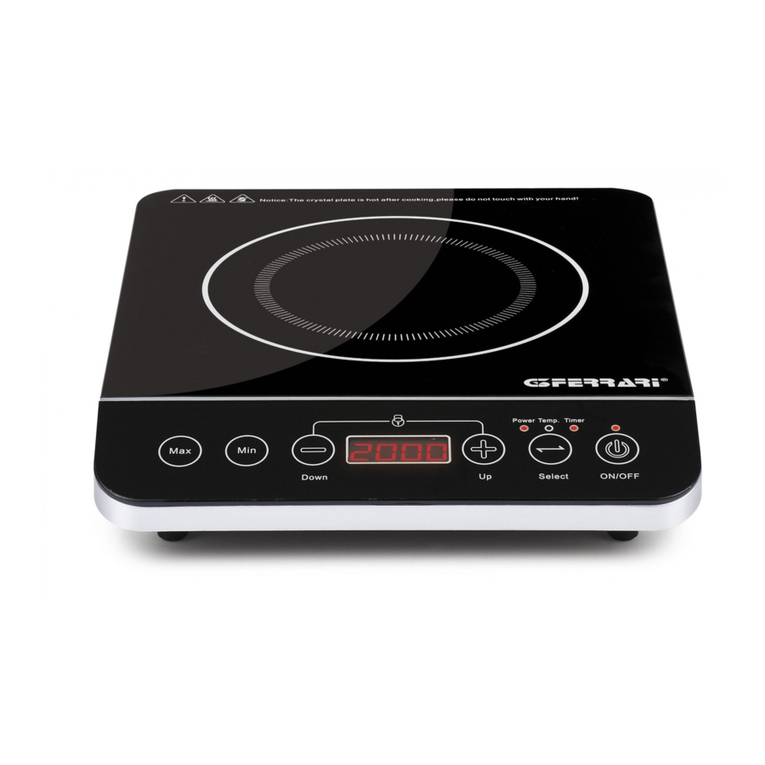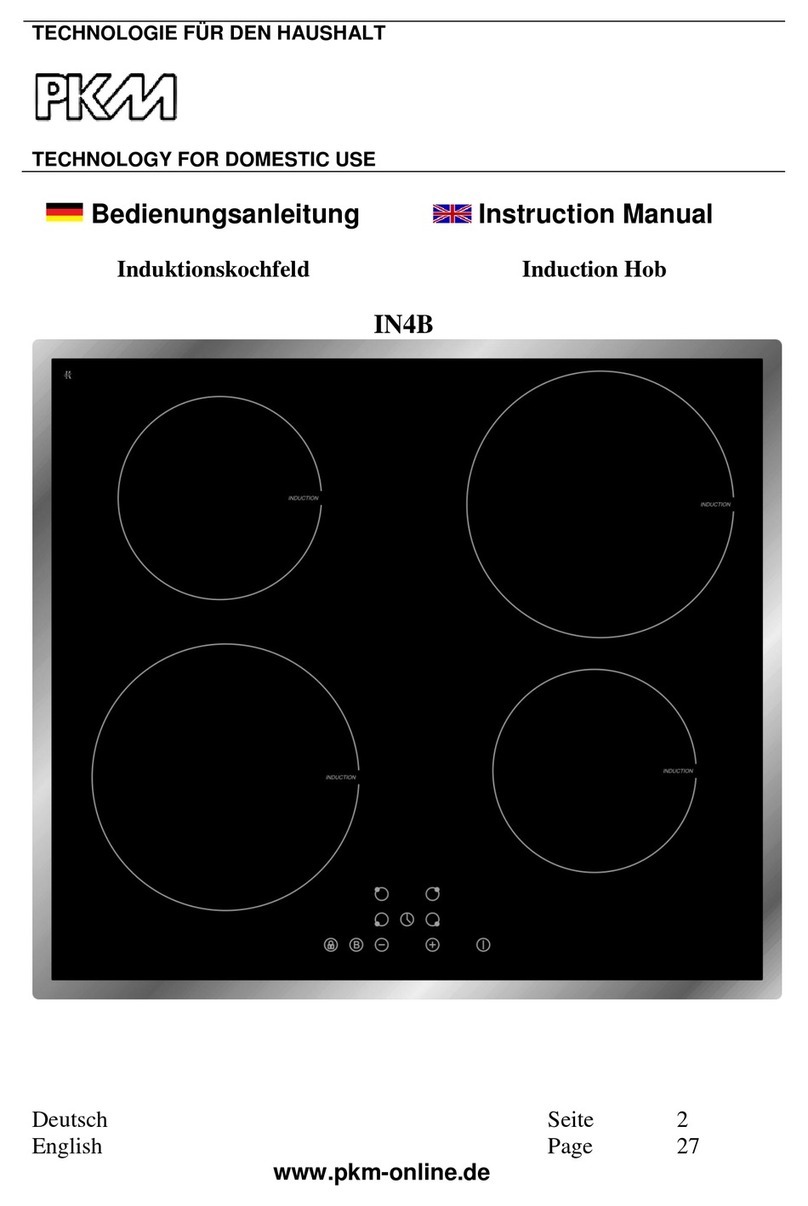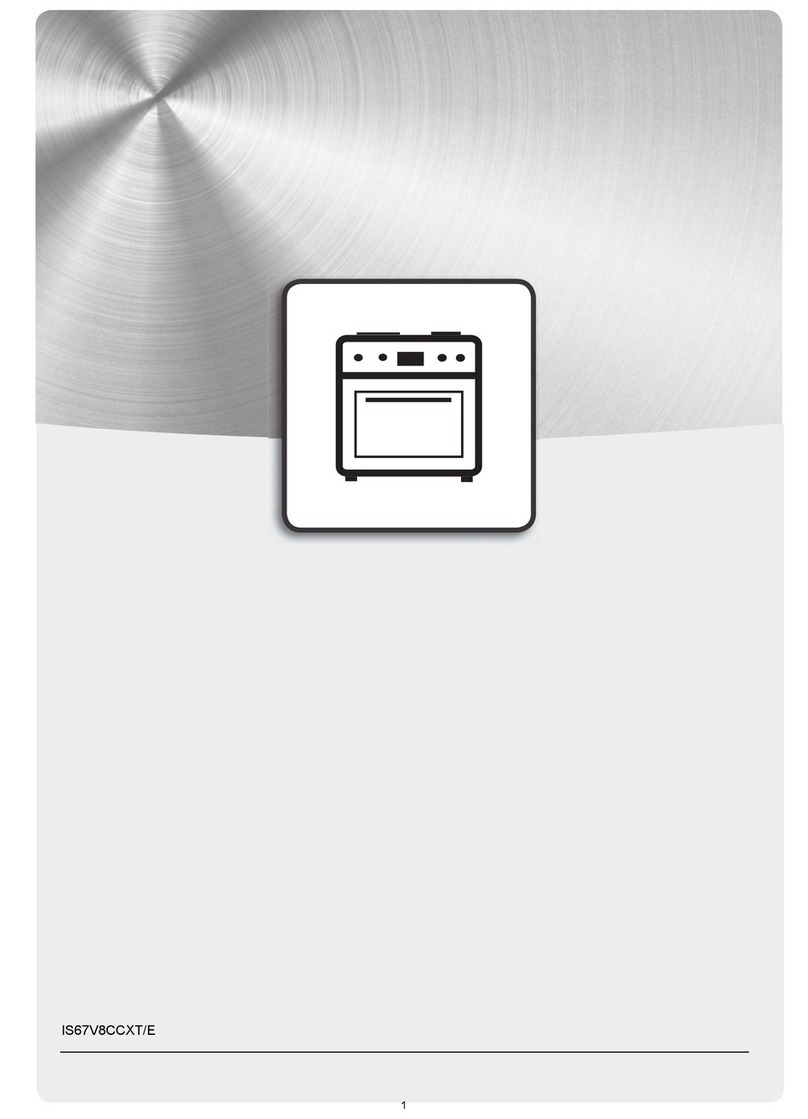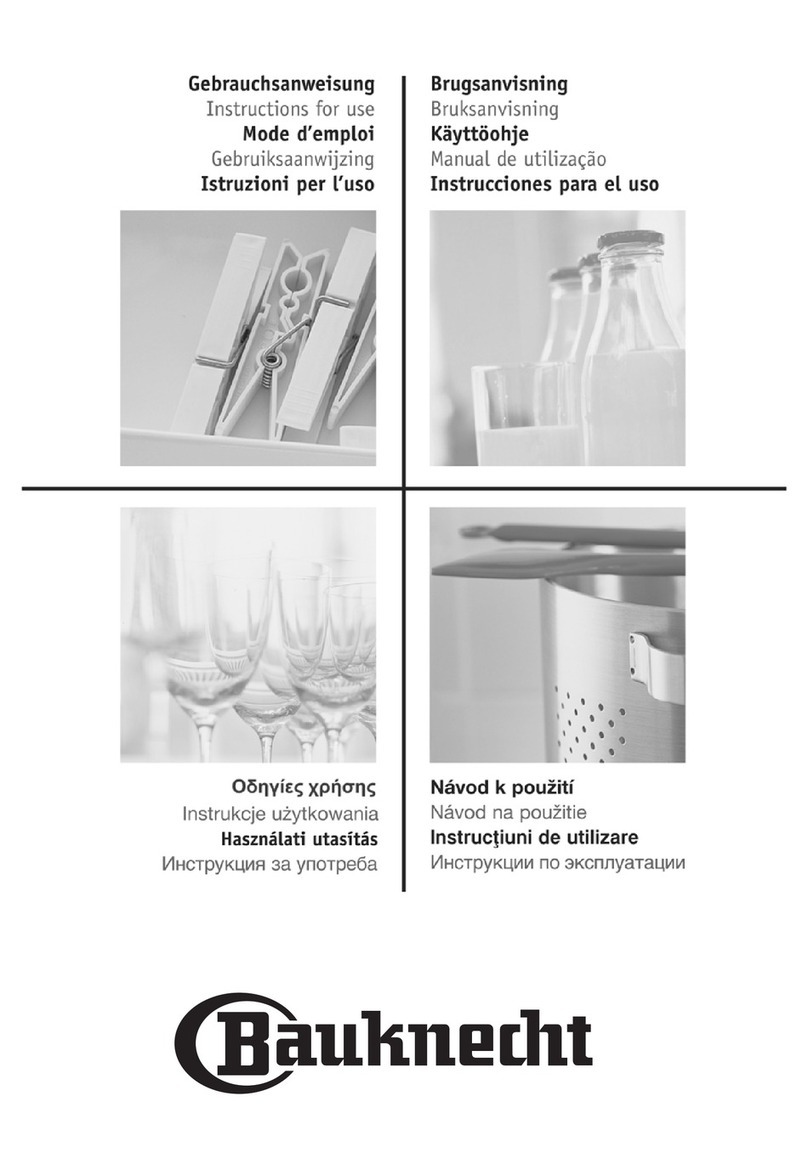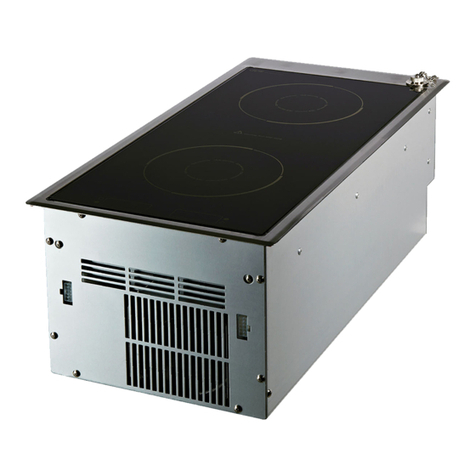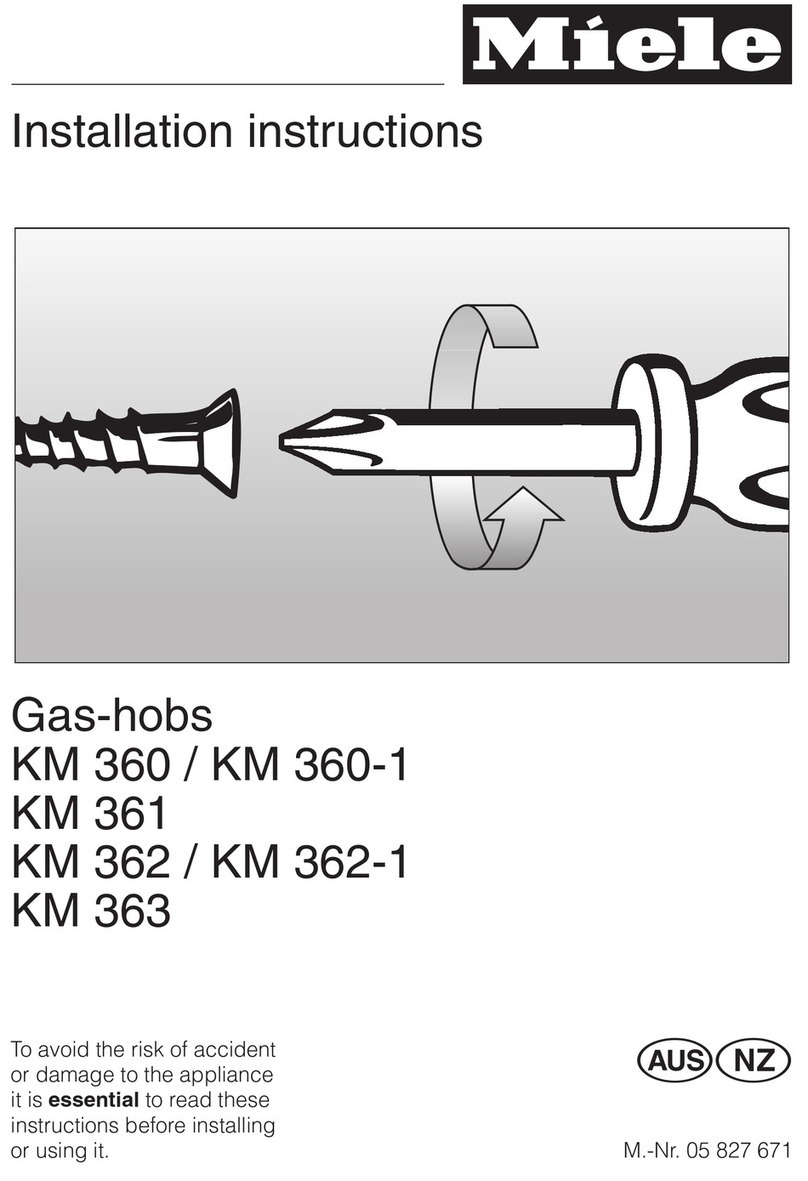22
INSTALLATION
FIG. 10 FIG. 11
5) ELECTRICAL CONNECTION
The electrical connection has to be done in
accordance with all electrical and installation
requirements of the regulation.
Before proceeding with the connection, please,
verify that:
- the voltage matches the value shown on the
specification plate and the section of the wires of
the electrical system can support the load, which
is also indicated on the specification plate.
- the power of the electrical system and the power
of the outlets is adequate to the maximum power
of the appliance (see the identification label in the
lower part of the body).
- The outelets and all the electrical system has an
efficient connection to the "earth" according with
the Regulation. We disclaim all responsabilities
for not observing such points.
- If the appliance is not equipped with an input
cable, connect to the clump with an adequate
section cable (see scheme paragraph 7) keeping
the "earth" conductor longer than "live" ones,
following the scheme of fig. 10.
When the connection to the input system has
been done through a outlet:
- apply to the input cable "C", if unprovided, a
normalized plug adequate to the load indicated in
the identification label. Connect the cables
according to the scheme of fig. 10, making sure
to respect the undermentioned respondences:
Letter L (Live) = cable brown colour;
Letter N (Neutral) = cable blue colour;
Symbol (Earth) = cable green - yellow
colour.
- The input cable has to be located so that never
reach the temperature of 90 °C.
- Please do not use in the connection any
reduction, adaptation that may provoke a false
contact with following dangerous overheatings.
- The outlet must be accessible after the built-in.
When the connection has been done directly to
the input system:
- interpose between the appliance and the system
an onnipolar switch, adequate to the load of the
appliance, with a minimum nose between the
contacts of 3 mm.
- eep in mind that the "earth" cable does not have
to be interrupted by the switch.
- The electrical connection can also be protected
by a differential switch with high sensitivity.
We recommend to fix the earth coloured cable to
an appropriate earth installation.
Before performing any service on the electrical
part of the appliance, it must absolutely be
disconnected from the electrical network.
WARN NGS:
all our products are projected and built
according with the European Norms EN 60 335-1
and EN 60 335-2-6 and relative amendments.
The appliance has been produced according
with the European Directives:
- CEE 2004/108/CE concerning the compatibility
electromagnetic.
- CEE 2006/95 concerning the electrical
security.
MPORTANT!
The appliance must be installed following
the manufacturer's instructions. The
manufacturer will not be liable for injury to
persons or animals or property damage
caused by an incorrect installation.
f the installation requires modifications to
the home's electrical system or if the
socket is incompatible with the appliance's
plug, have changes or replacements
performed by professionally-qualified
person. n particular, this person must also
make sure that the section of the wires of
the socket is suitable for the power
absorbed by the appliance.
